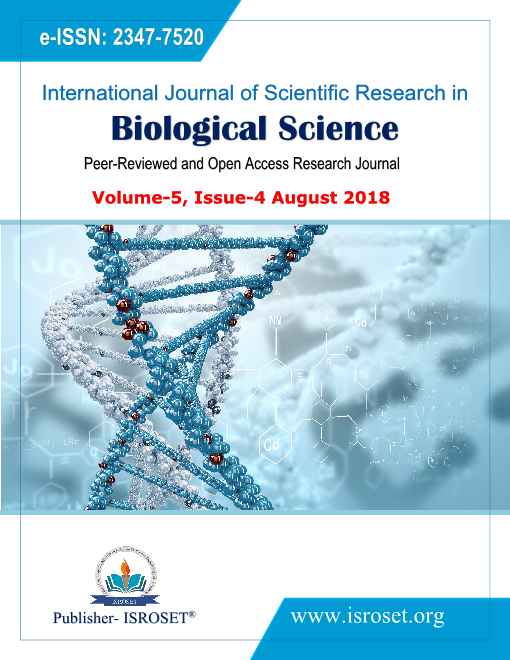Proteases: A Beneficial Degradative Enzyme in Therapeutic Applications
Keywords:
Degradative enzyme, Cardiovascular disease, Tissue damage, Medical applications, Cancer, Protease inhibitorsAbstract
Proteases probably arose at the initial phases of protein development as simple degradative enzymes essential for protein degradation into its simpler form as amino acids in prokaryotic organisms. Proteases are an increasing group of enzymes that hold great potential. Proteases are produced by animals, plants, and microorganisms. Microorganisms play a dominant role in the field of proteases production. Their contribution in the life cycle of numerous pathogenic organisms has led them to become a probable target for emerging therapeutic agents in contradiction of life-threatening diseases. These enzymes are being utilized in the cure of respiratory tract issues, cardiovascular disease, inflammation, and cancer. Proteases promote healing process of tissue damage; it may be surgical or accidental damages, fractures or burns. Due to these special features, proteases are an emerging class of enzymes that possess diverse medical applications. Along with proteases, protease inhibitors are also played a very important role in disease control. Therefore protease inhibitors have drawn the attention towards their crucial role in the therapeutic application.
References
T. Anna, G. Ewa, “Proteases: significance role and determination”, CHEMIK,Vol. 69, No. 2, pp. 81–88, 2015.
B.K. Bhattacharyya, “Bromelain: An Overview”, Natural Product Radiance, Vol. 7, No. 4, pp. 359-363, 2008.
Y.A. DeClerck, S. Imren, “Protease inhibitors: role and potential therapeutic use in human cancer”, Eur J Cancer, Vol. 30A, No.14, pp. 2170-80, 1994.
J. Furhan, S. Sharma, “Microbial Alkaline Proteases: Findings and Applications”, Int.J.Inv.Pharm.Sci., Vol. 2, No.4, pp. 823-834, 2014.
R.M. Herriott, “Pepsinogen and Pepsin”, The Journal of General Physiology, Vol. 45, pp.57-76, 1962.
Y. Hua, S. Nair, “Proteases in cardiometabolic diseases: Pathophysiology, molecular mechanisms and clinical applications”, Biochim Biophys Acta., Vol. 1852, No.2, pp. 195–208, 2015.
J.A. Mótyán, F. Tóth, J. Tőzsér, “Research Applications of Proteolytic Enzymes in Molecular Biology”, Biomolecules, Vol. 3, pp. 923-942, 2013.
S.A. Haley, G.M. Wessel, “The Cortical Granule Serine Protease CGSP1 of the Sea Urchin, Strongylocentrotus purpuratus, Is Autocatalytic and Contains a Low-Density Lipoprotein Receptor-like Domain”, Developmental Biology, Vol. 211, pp. 1-10, 1999.
Q. Li, L. Yi, P. Marek, B.L. Iverson, “Commercial Proteases: Present and future”, FEBS Letters, Vol. 587, pp. 1155–1163, 2013.
M. Akimov, V. Bezuglov, “New Advances in the Basic and Clinical Gastroenterology”, InTech Publisher, United Kingdom, pp. 212-234, 2012.
J.E. Onken, P.P. Greer, B. Calingaert, L.P. Hale, “Bromelain treatment decreases secretion of pro-inflammatory cytokines and chemokines by colon biopsies in vitro”, Clin Immunol., Vol. 126, No.3, pp. 345-52, 2008.
N. Oulhen, D. Xu, G.M. Wessel, “Conservation of sequence and function in fertilization of the cortical granule serine protease in echinoderms”, Biochem Biophys Res Commun., Vol. 450, No. 3, pp. 1135-1141, 2014.
N. Pescosolido, A. Barbato, A. Pascarella, R. Giannotti, M. Genzano, M. Nebbioso, “Role of Protease-Inhibitors in Ocular Diseases”, Molecules, Vol.19, pp. 20557-20569, 2014.
K. Pillai, J. Akhter, T.C. Chua, D.L. Morris, “Anticancer property of Bromelain with therapeutic potential in malignant peritoneal mesothelioma”, Cancer Investigation, Vol. 31, No. 4, pp.241-50, 2013.
K. Pillai, A. Ehteda, J. Akhter, T.C. Chua, D.L. Morris, “Anticancer effect of Bromelain alone and in combination with cisplatin or fluorouracil on malignant peritoneal mesothelioma cells”, European Journal of Cancer, Vol. 50, No.4, pp. 66, 2014.
N.G. Rábade, J.A. Badillo-Corona, J.S. Aranda-Barradas, M.C. Oliver-Salvador, "Production of plant proteases in vivo and in vitro-a review”, Biotechnology Advances, Vol. 29, No.6, pp. 983-996, 2011.
R. Sawant, S. Nagendran, “Protease: An Enzyme with Multiple Industrial Applications”, World Journal of Pharmacy and Pharmaceutical Sciences, Vol. 3, No. 6, pp. 568–579, 2014.
D. Shah, K. Mital, “The Role of Trypsin: Chymotrypsin in Tissue Repair”, Adv Ther., Vol. 35, pp. 31–42, 2017.
J. Leipner, R. Saller, “Systemic Enzyme Therapy in Oncology”, DRUGS, Vol. 59, No. 4, pp. 769-780, 2000.
N.S. Tooba, F. Sadaf, “Protease inhibitors as Ad-hoc antibiotics”, Open Pharmaceutical Sciences Journal, Vol. 3, pp.131-137, 2016.
N.J. Veloorvalappil, R.B. Smitha, S. Pradeep, S. Sreedevi, K.N. Unni, S. Sajith, P. Priji, M.S. Josh, S. Benjamin, “Versatility of Microbial Proteases”, Advances in Enzyme Research, Vol. 1, No.3, pp. 39-51, 2013.
N. Verma, N.K. Meena, I. Majumdar, J. Paul, “Role of Bromelain as Herbal Anti-Inflammatory compound Using In Vitro and In Vivo Model of Colitis”, Journal of Autoimmune Disorders, Vol. 3, No.4, pp.52, 2017.
N.P. Walsh, S.S. Ahmad, “Proteases in blood clotting”, Essays in Biochemistry, Vol. 38, pp. 95-111, 2002.
Downloads
Published
How to Cite
Issue
Section
License

This work is licensed under a Creative Commons Attribution 4.0 International License.
Authors contributing to this journal agree to publish their articles under the Creative Commons Attribution 4.0 International License, allowing third parties to share their work (copy, distribute, transmit) and to adapt it, under the condition that the authors are given credit and that in the event of reuse or distribution, the terms of this license are made clear.







